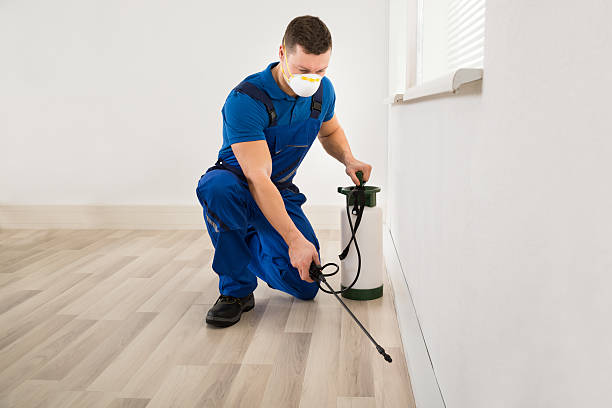Specialist Insect Control Techniques for Long-Term Results
In the realm of insect control, achieving continual efficiency and long-term outcomes needs a precise strategy that transcends plain extermination. Expert bug control techniques envelop a thorough approach that begins with an extensive inspection and analysis, followed by accurate pest recognition to recognize their habits patterns. The execution of Integrated Insect Management (IPM) concepts, coupled with eco-conscious treatments, creates the keystone of sustainable insect obliteration. The real test lies in the ongoing monitoring and maintenance of the treated areas, making sure a pest-free setting for the near future. By delving right into the complexities of these techniques, a deeper understanding of specialist parasite control methods for enduring outcomes arises.
Evaluation and Assessment
Upon entering a residential property for pest control services, the initial step is a complete examination and analysis to recognize the degree of the problem and identify the most reliable treatment plan. Professional insect control specialists are trained to thoroughly check out the premises, seeking indicators of insect activity such as droppings, munch marks, nests, or any kind of architectural damage. They will certainly additionally assess the problems that might be drawing in insects, such as food sources, water leaks, or access factors.

Bug Recognition and Habits

Additionally, comprehending the habits of the identified pest is crucial to implementing reliable control actions. Recognizing where insects nest, what they feed on, and their activity patterns can help pest control experts devise approaches to remove them effectively. Some insects might be nocturnal, while others are much more energetic throughout the day. This understanding enables for the application of treatments at optimal times for maximum efficiency.
Integrated Bug Administration (IPM)
Integrated Insect Management (IPM) strategies integrate multiple techniques to control and stop bug invasions in a lasting and eco-friendly way. bed bug treatment. By incorporating approaches such as biological control, habitat adjustment, adjustment of social techniques, and making use of resistant ranges, IPM intends to minimize using chemical pesticides
Among the key concepts of IPM is the emphasis on prevention. This proactive technique involves surveillance insect populations routinely to discover any possible problems prior to they escalate. By identifying bug problems early on, pest control actions can be applied swiftly and properly.
Moreover, IPM advertises check out here the usage of safe pest control techniques whenever feasible. This can consist why not look here of using natural predators of the insects, presenting useful pests, or making use of pheromones to interfere with breeding patterns. By minimizing reliance on chemical pesticides, IPM not only secures the atmosphere however also assists keep an equilibrium in the community.
Environmentally-Friendly Treatments
Applying eco-conscious techniques in bug control procedures can successfully deal with problems while prioritizing ecological sustainability. Environmentally-friendly treatments focus on decreasing the influence of bug control approaches on description ecosystems, non-target microorganisms, and human health and wellness. These approaches commonly involve using all-natural predators, such as ladybugs or nematodes, to manage pest populaces, decreasing the requirement for chemical interventions. Furthermore, strategies like habitat control, such as adjusting wetness levels or removing food sources, can aid prevent parasites without using dangerous substances.
One more key element of environmentally-friendly therapies is making use of organic and biodegradable products that damage down promptly without leaving hazardous residues in the environment. Agricultural insecticides derived from plants like chrysanthemums or neem provide efficient insect control while positioning marginal risk to non-target types. Employing approaches like heat treatments or scent catches can target particular bugs with accuracy, reducing the general ecological influence of pest control methods.
Ongoing Monitoring and Maintenance
Regular examinations by qualified specialists are needed to identify any signs of bug task, evaluate the performance of previous therapies, and make adjustments to the bug control plan as needed. By monitoring pest populations over time, parasite control professionals can track patterns, expect potential concerns, and carry out precautionary measures to lessen the danger of future problems.
In addition to surveillance, maintenance techniques are crucial for lasting insect control success. This includes applying proper hygiene actions to remove prospective food and water sources for insects, sealing off access indicate protect against bugs from entering the facilities, and resolving any structural issues that can promote pest invasions (bed bug exterminator). By integrating continuous surveillance and upkeep right into an integrated parasite monitoring approach, businesses can guarantee a pest-free setting and guard their residential or commercial property versus expensive damage and health dangers
Conclusion
In conclusion, utilizing specialist insect control strategies such as comprehensive assessment and evaluation, precise insect identification and understanding of their behavior, integrated pest monitoring techniques, environmentally-friendly therapies, and continuous surveillance and upkeep are vital for attaining lasting results in pest control. By executing these approaches, people can properly take care of bug invasions and maintain a pest-free environment in a lasting fashion.